Supporting Young Children’s Physical Development through Tailored Motor Competency Interventions within a School Setting
Abstract
1. Introduction
2. Materials and Methods
2.1. The School and Sample
2.2. The Timeline of the Study
2.3. Observations as Research Methods
2.4. Assessment Criteria for Each of the Skills
2.5. Motor Competency Interventions within the Scheme of Work (SOW)
2.6. Statistical Analysis
3. Results
3.1. Hopping
3.2. Running
3.3. Kicking
3.4. Climbing
3.5. Use of Scissors
4. Discussion
4.1. Gross Motor Skills Development
4.1.1. Hopping
4.1.2. Running
4.1.3. Climbing
4.2. Fine Motor Skills Development
4.2.1. Climbing
4.2.2. The Use of Scissors
4.2.3. The Use of Cutlery
5. Strengths and Limitations
6. Conclusions and Recommendations
Recommendations
Author Contributions
Funding
Institutional Review Board Statement
Informed Consent Statement
Data Availability Statement
Acknowledgments
Conflicts of Interest
References
- Stanford, M.; Davie, P.; Mulcahy, J. Growing up in the COVID-19 Pandemic: An Evidence Review of the Impact of Pandemic Life on Physical Development in the Early Years. 2021. Available online: https://www.eif.org.uk/report/growing-up-in-the-covid-19-pandemic-an-evidence-review-of-the-impact-of-pandemic-life-on-physical-development-in-the-early-years (accessed on 3 July 2024).
- Lazarus, R. Hand-Eye Coordination. 2021. Available online: https://www.optometrists.org/general-practice-optometry/guide-to-sports-vision/vision-skills-for-sports/hand-eye-coordination/ (accessed on 3 July 2024).
- Huggett, E.; Howells, K. The impact of COVID-19 on the physical development of reception aged children. Phys. Educ. Matters 2022, 17, 60–64. [Google Scholar]
- Department for Education. Early Years Foundation Stage Statutory Framework; For group and school-based providers; Setting the standards for learning, development and care for children from birth to five; Department for Education: London, UK, 2023.
- Veldman, S.L.; Chin A Paw, M.J.; Altenburg, T.M. Physical activity and prospective associations with indicators of health and development in children aged <5 years: A systematic review. Int. J. Behav. Nutr. Phys. Act. 2021, 18, 6. [Google Scholar] [CrossRef] [PubMed]
- Schmutz, E.A.; Leeger-Aschmann, C.S.; Kakebeeke, T.H.; Zysset, A.E.; Messerli-Bürgy, N.; Stülb, K.; Kriemler, S. Motor competence and physical activity in early childhood: Stability and relationship. Front. Public Health 2020, 8, 39. [Google Scholar] [CrossRef] [PubMed]
- Stodden, D.F.; Goodway, J.D.; Langendorfer, S.J.; Roberton, M.A.; Rudisill, M.E.; Garcia, C.; Garcia, L.E. A developmental perspective on the role of motor skill competence in physical activity: An emergent relationship. Quest 2008, 60, 290–306. [Google Scholar] [CrossRef]
- King, V.; Howells, K. Early Years Position Paper; Association of Physical Education: Worcester, UK, 2024. [Google Scholar]
- Jones, D.; Innerd, A.; Giles, E.L.; Azevedo, L.B. The association between physical activity, motor skills and school readiness in 4-5-year-old children in the Northeast of England. Int. J. Environ. Res. Public Health 2021, 18, 11931. [Google Scholar] [CrossRef]
- Office for Health Improvements and Disparities. Public Health Profiles. 2023. Available online: https://fingertips.phe.org.uk/search/school%20readiness (accessed on 3 July 2024).
- Department for Education. Help for Early Years Providers. 2022. Available online: https://help-for-early-years-providers.education.gov.uk/ (accessed on 3 July 2024).
- Campbell, S.; Greenwood, M.; Prior, S.; Shearer, T.; Walkem, K.; Young, S.; Bywaters, D.; Walker, K. Purposive sampling: Complex or simple? Research case examples. J. Res. Nurs. 2020, 25, 652–661. [Google Scholar] [CrossRef]
- Polimac, M.; Vukadinovic, M.; Obradovic, J. Differences in motor abilities of children in relation to gender and age. Exerc. Qual. Life 2013, 5, 28–33. Available online: https://www.semanticscholar.org/paper/DIFFERENCES-IN-MOTOR-ABILITIES-OF-CHILDREN-IN-TO-Polimac-Vukadinovi%C4%87/83a66d3607c1626993f8d8fb70e972a078599142 (accessed on 3 July 2024). [CrossRef]
- Navarro-Patón, R.; Arufe-Giráldez, V.; Sanmiguel-Rodríguez, A.; Mecías-Calvo, M. Differences on motor competence in 4-year-old boys and girls regarding the quarter of birth: Is there a relative age effect? Children 2021, 8, 141. [Google Scholar] [CrossRef]
- Milat, A.J.; King, L.; Bauman, A.E.; Redman, S. The concept of scalability: Increasing the scale and potential adoption of health promotion interventions into policy and practice. Health Promot. Int. 2013, 28, 285–298. [Google Scholar] [CrossRef]
- Hammer, G.P.; du Prel, J.B.; Blettner, M. Avoiding bias in observational studies: Part 8 in a series of articles on evaluation of scientific publications. Dtsch. Ärzteblatt Int. 2009, 106, 664. [Google Scholar] [CrossRef]
- U.S. Department of Health and Human Services. Centers for Disease Control and Prevention. Data Collection Methods for Program Evaluation: Observation. Available online: https://www.cdc.gov/healthyyouth/evaluation/pdf/brief16.pdf (accessed on 3 July 2024).
- Ulrich, D.A. Test of Gross Motor Development 2: Examiner’s Manual, 2nd ed.; PRO-ED: Austin, TX, USA, 2000. [Google Scholar]
- Aye, T.; Oo, K.S.; Khin, M.T.; Kuramoto-Ahuja, T.; Maruyama, H. Reliability of the test of gross motor development second edition (TGMD-2) for Kindergarten children in Myanmar. J. Phys. Ther. Sci. 2017, 29, 1726–1731. [Google Scholar] [CrossRef][Green Version]
- Cools, W.; De Martelaer, K.; Samaey, C.; Andries, C. Movement Skill Assessment of Typically Developing Preschool Children: A Review of Seven Movement Skill Assessment Tools. J. Sports Sci. Med. 2009, 8, 154–168. Available online: http://www.ncbi.nlm.nih.gov/pmc/articles/pmc3761481/ (accessed on 3 July 2024). [PubMed]
- Department for Education Development Mattters. Non-Statutory Curriculum Gudiance for the Early Years Foundation Stage; Department for Education Development Mattters: London, UK, 2023.
- Department for Education. Statutory Framework for the Early Years Foundation Stage; Department for Education: London, UK, 2021.
- Saether, R.; Helbostad, J.L.; Riphagen, I.I.; Vik, T. Clinical tools to assess balance in children and adults with cerebral palsy: A systematic review. Dev. Med. Child Neurol. 2013, 55, 988–999. [Google Scholar] [CrossRef] [PubMed]
- Hutchinson, A.B.; Yao, P.; Hutchinson, M.R. Single-leg balance and core motor control in children: When does the risk for ACL injury occurs? BMJ Open Sport Exerc. Med. 2016, 2, e000135. [Google Scholar] [CrossRef] [PubMed][Green Version]
- Sallis, J.F.; Adlakha, D.; Oyeyemi, A.; Salvo, D. An international physical activity and public health research agenda to inform coronavirus disease-2019 policies and practices. J. Sport Health Sci. 2020, 9, 328–334. [Google Scholar] [CrossRef]
- van Sluijs, E.M.; McMinn, A.M.; Griffin, S.J. Effectiveness of interventions to promote physical activity in children and adolescents: Systematic review of controlled trials. Br. Med. J. 2007, 335, 703. [Google Scholar] [CrossRef]
- Jane, J.Y.; Burnett, A.F.; Sit, C.H. Motor skill interventions in children with developmental coordination disorder: A systematic review and meta-analysis. Arch. Phys. Med. Rehabil. 2018, 99, 2076–2099. [Google Scholar] [CrossRef]
- Eddy, L.H.; Wood, M.L.; Shire, K.A.; Bingham, D.D.; Bonnick, E.; Creaser, A.; Mon-Williams, M.; Hill, L.J. A systematic review of randomized and case-controlled trials investigating the effectiveness of school-based motor skill interventions in 3- to 12-year-old children. Child Care Health Dev. 2019, 45, 773–790. [Google Scholar] [CrossRef]
- Robinson, L.E.; Goodway, J.D. Instructional climates in preschool children who are at-risk. Part I: Object-control skill development. Res. Q. Exerc. Sport 2009, 80, 533–542. [Google Scholar] [CrossRef]
- Valentini, N.C.; Ramalho, M.H.; Oliveira, M.A. Movement Assessment Battery for Children-2: Translation, reliability, and validity for Brazilian children. Res. Dev. Disabil. 2014, 35, 733–740. [Google Scholar] [CrossRef]
- Davies, M.M. Outdoors: An important context for young children’s development. Early Child Dev. Care 1996, 115, 37–49. [Google Scholar] [CrossRef]
- van Hyfte, E.; Vercruysse, S.; Warlop, G.; Lenoir, M. A Physical Education Program Based Upon an Obstacle Course Positively Affects Morot Competence in 6- to 7-Year-Old Children: A Pilot Study. J. Teach. Phys. Educ. 2021, 41, 610–621. [Google Scholar] [CrossRef]
- Curtin, D. Modeling in Physical Education. 2023. Available online: https://plt4m.com/blog/modeling-in-physical-education/#:~:text=Modeling%20is%20the%20process%20of,correctly%20and%20with%20proper%20form (accessed on 3 July 2024).
- Kajanus, A. Physical education in Chinese schools: Role models, repetition, and winning. Educ. About Asia 2016, 21, 5–8. Available online: https://www.researchgate.net/publication/308725708_Physical_Education_in_Chinese_Schools_-_Role_Models_Repetition_and_Winning (accessed on 3 July 2024).
- Sutapa, P.; Pratama, K.W.; Rosly, M.M.; Ali, S.K.S.; Karakauki, M. Improving Motor Skills in Early Childhood through Goal-Orientated Play Activity. Children 2021, 8, 994. [Google Scholar] [CrossRef]
- Ridgers, N.; Carter, L.M.; Stratton, G.; McKenzie, T. Examining children’s physical activity and play behaviors during school playtime over time. Health Educ. Res. 2011, 26, 586–595. [Google Scholar] [CrossRef] [PubMed]
- Flores, F.S.; Rodrigues, L.P.; Copetti, F.; Lopes, F.; Cordovil, R. Affordances for motor skill development in home, school, and sport environments: A narrative review. Percept. Mot. Ski. 2019, 126, 366–388. [Google Scholar] [CrossRef]
- Koller, S.H. Ecologia do desenvolvimento humano: Pesquisa e intervenção no Brasil. In Ecology of Human Development: Research and Intervention in Brazil; Casa do Psicólogo: São Paulo, Brazil, 2004. [Google Scholar]
- Gallahue, D.; Ozmun, J.C.; Goodway, J.D.; Goodway, J. Understanding Motor Development: Infants, Children, Adolescents, Adults, 5th ed.; McGraw-Hill Education: New York, NY, USA, 2011. [Google Scholar]
- NHS Southern Health, NHS Foundation Trust. Handwriting and Fine Motor Skills. Available online: https://www.southernhealth.nhs.uk/our-services/a-z-list-of-services/childrens-occupational-therapy-service-isle-wight/handwriting-and-fine-motor-skills (accessed on 3 July 2024).
- Bremer, E.; Cairney, J. Fundamental movement skills and health-related outcomes: A narrative review of longitudinal and intervention studies targeting typically developing children. Am. J. Lifestyle Med. 2018, 12, 148–159. [Google Scholar] [CrossRef]
- Goodway, D.G.; Famelia, R.; Bakhtiar, S. Future directions in physical education & sport: Developing fundamental motor competence in the early years is paramount to lifelong physical activity. Asian Soc. Sci. 2014, 10, 44–54. [Google Scholar] [CrossRef]
- Howells, K. Chapter 10 Supporting physical development, health and well-being through the use of outdoor environments. In Exploring Children’s Learning; Ritchie, C., Ed.; Routledge: London, UK, 2016. [Google Scholar]
- Michigan State University. Physical Development and Health. 2016. Available online: https://www.canr.msu.edu/child-family-development/school-readiness/physical-development-and-health/index (accessed on 3 July 2024).
- Tarmidi, N.A.Z.A.; Bakar, K.A. The Use of Cutting Kit in Improving Young Children’s Scissor Skills. Int. J. Acad. Res. Progress. Educ. Dev. 2022, 11, 306–320. [Google Scholar] [CrossRef]
- Gutek, G. The Montessori Method: The Origins of an Educational Innovation: Including an Abridged and Annotated Edition of Maria Montessori’s the Montessori Method; Rowman and Littlefield Publishers: Lanham, MD, USA, 2004. [Google Scholar]
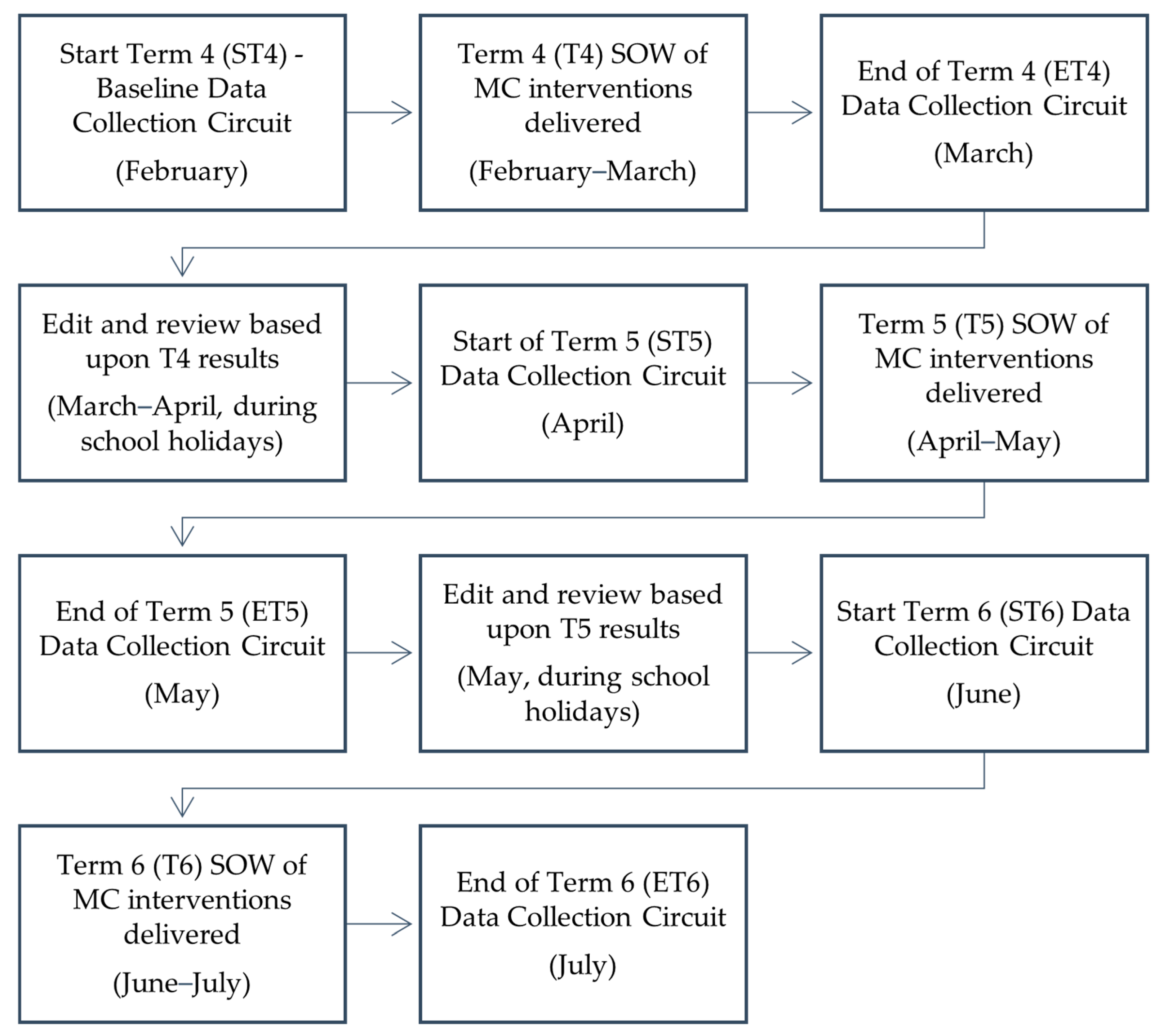
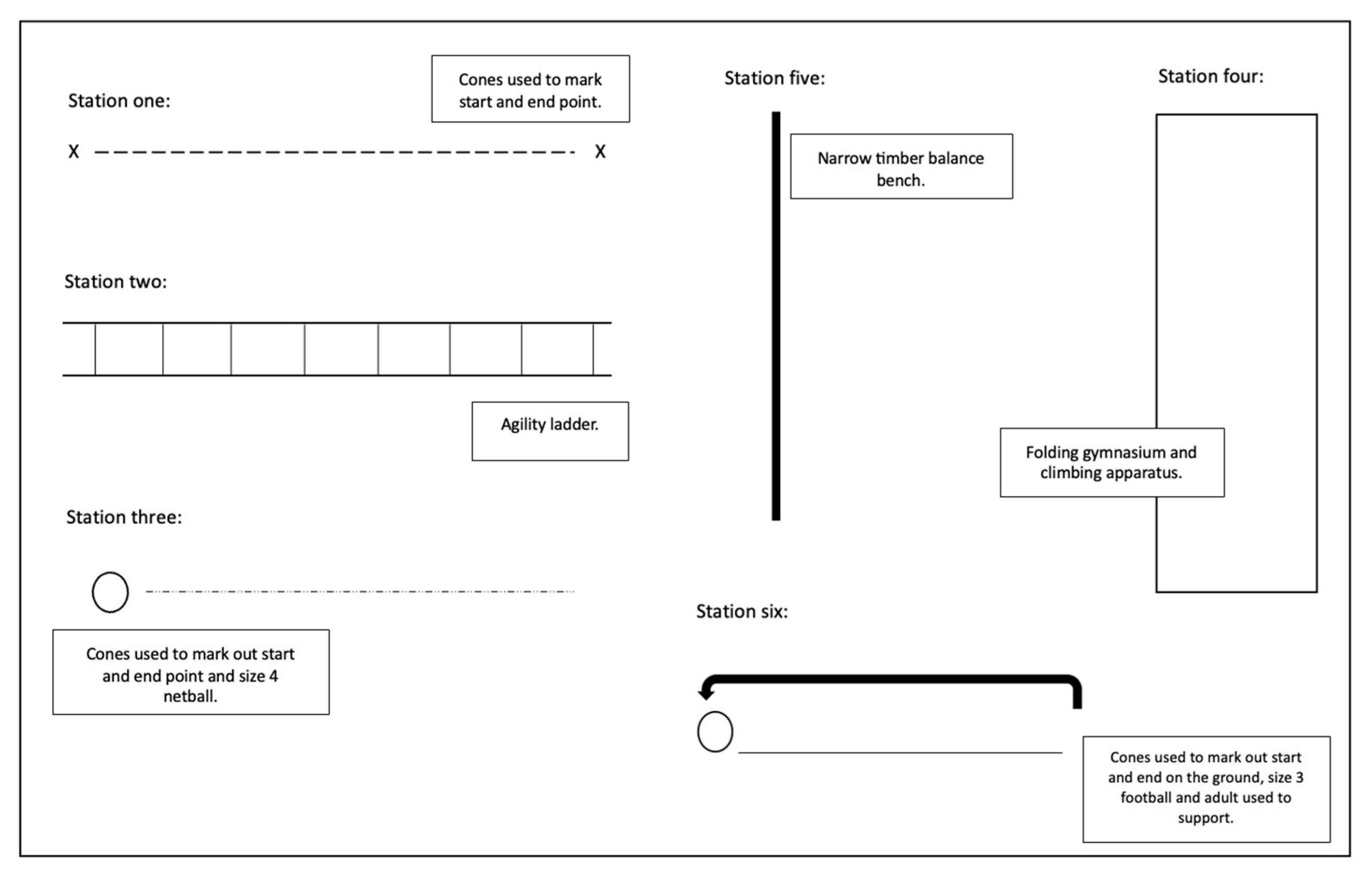
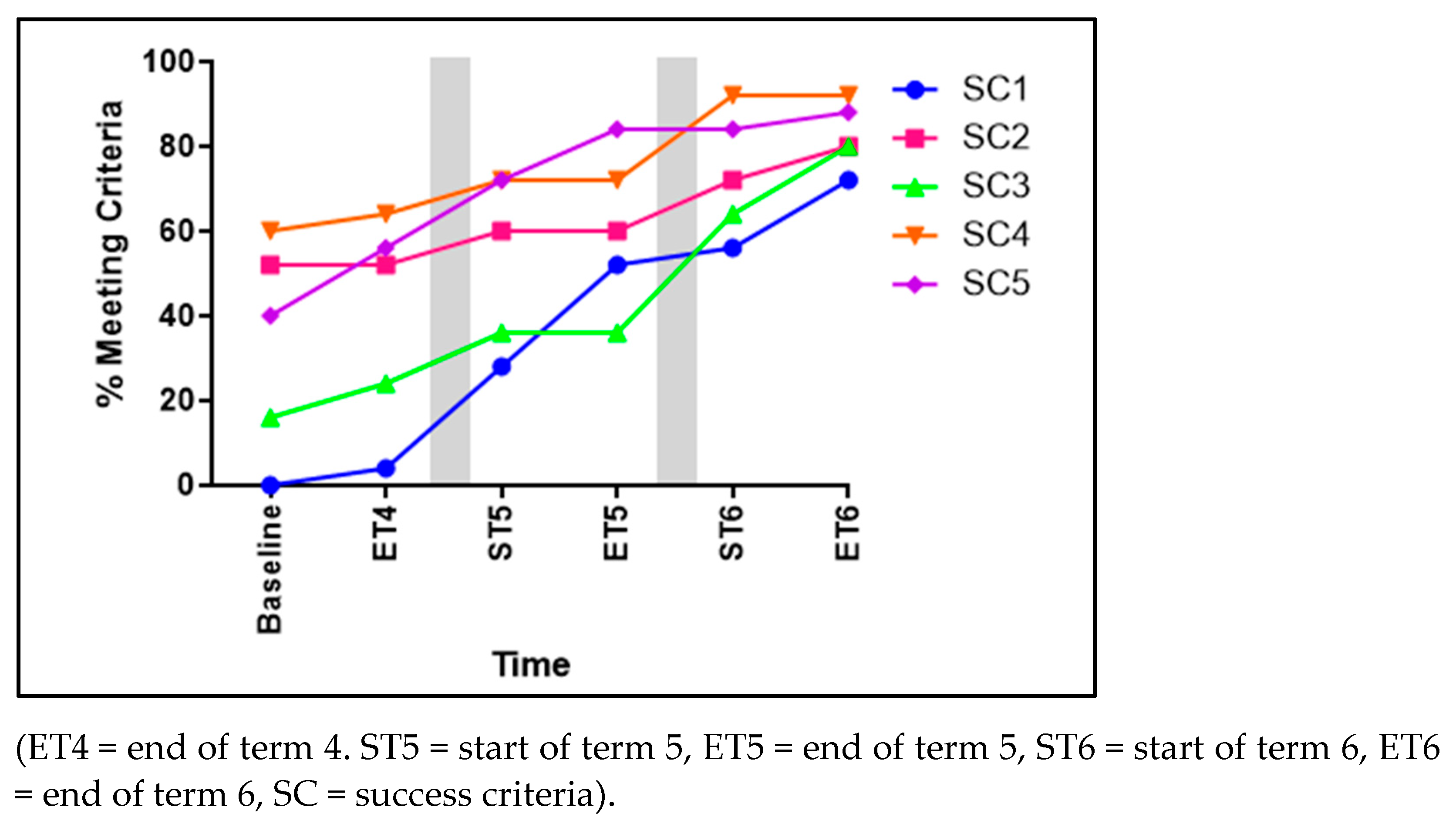
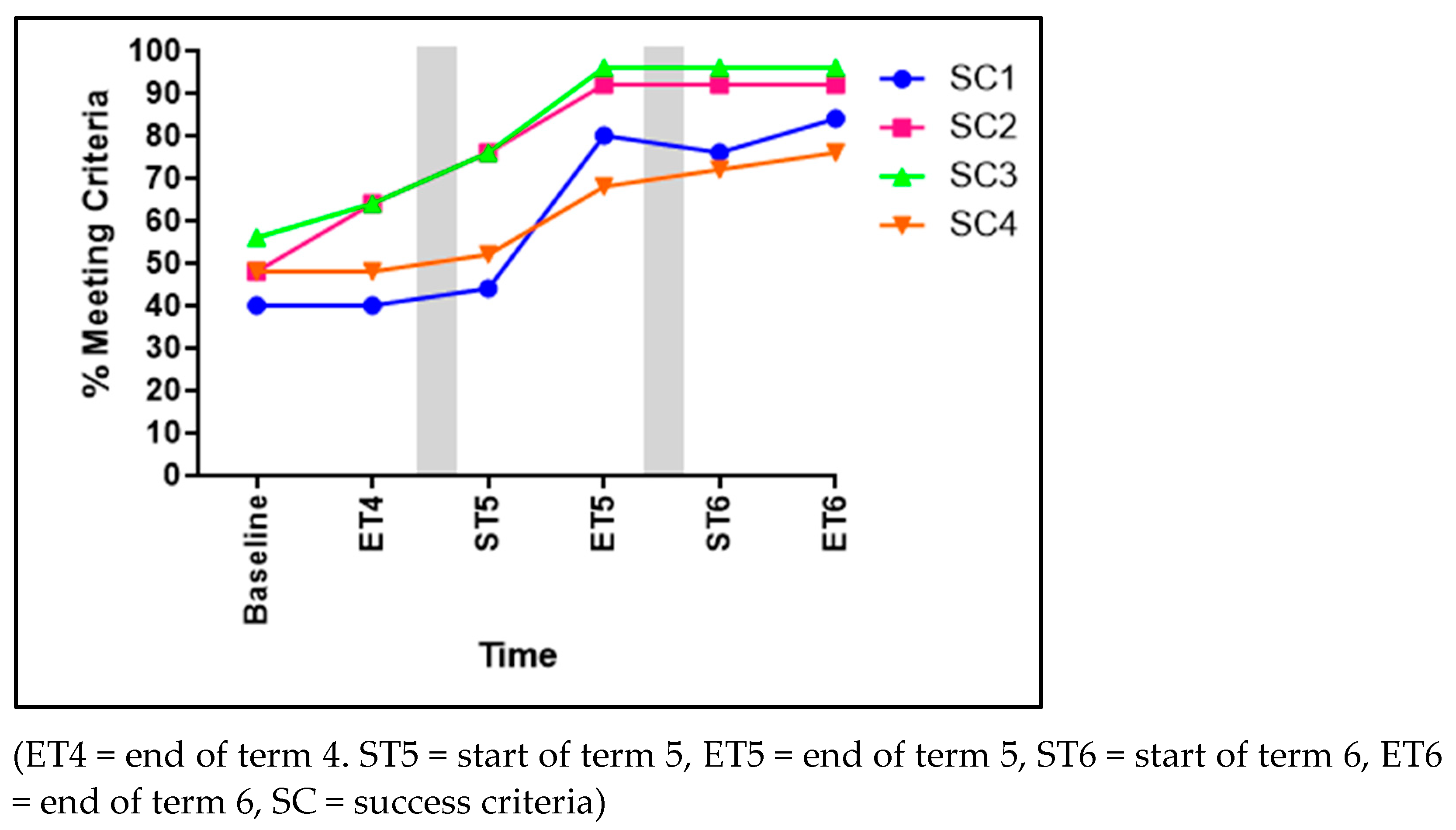
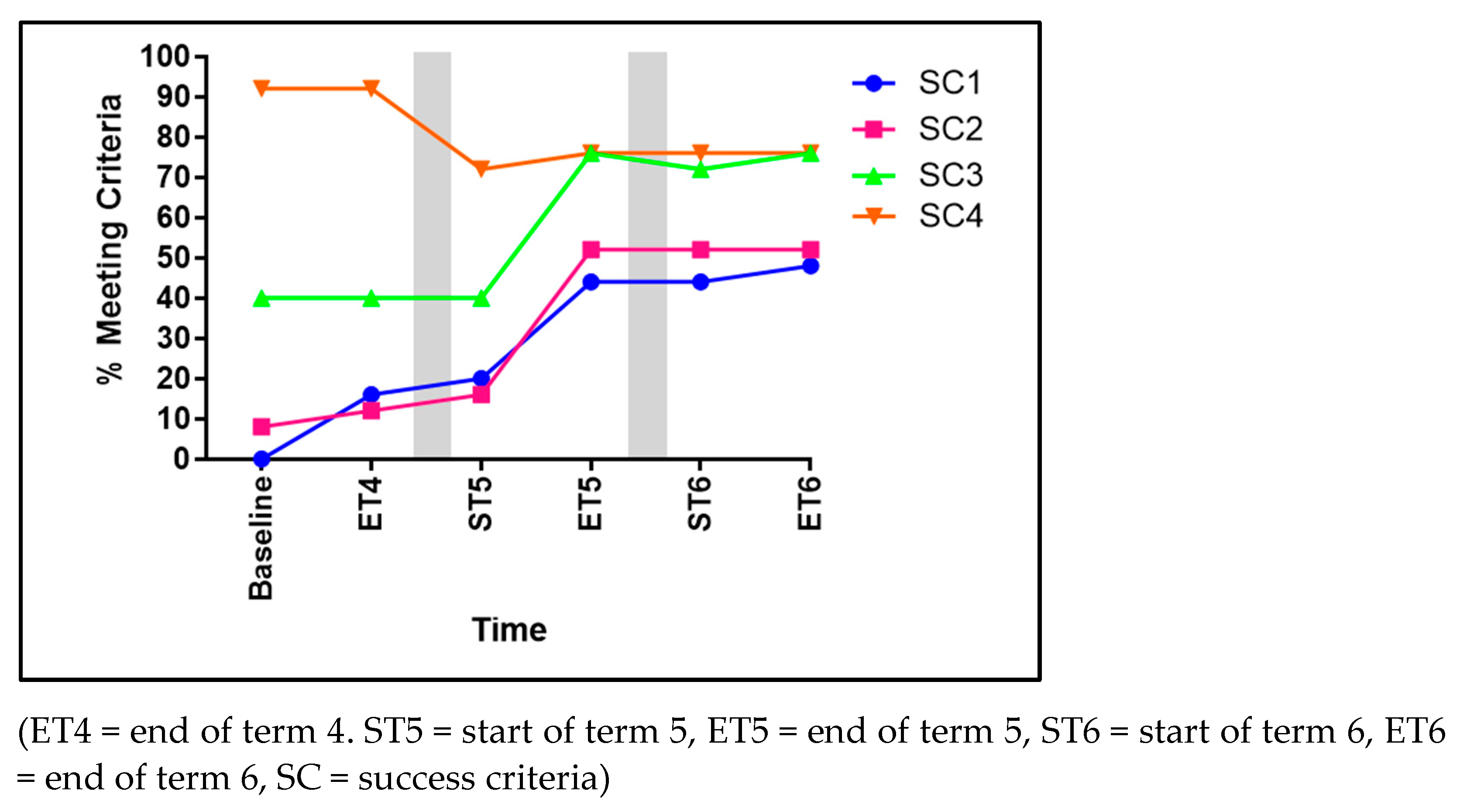
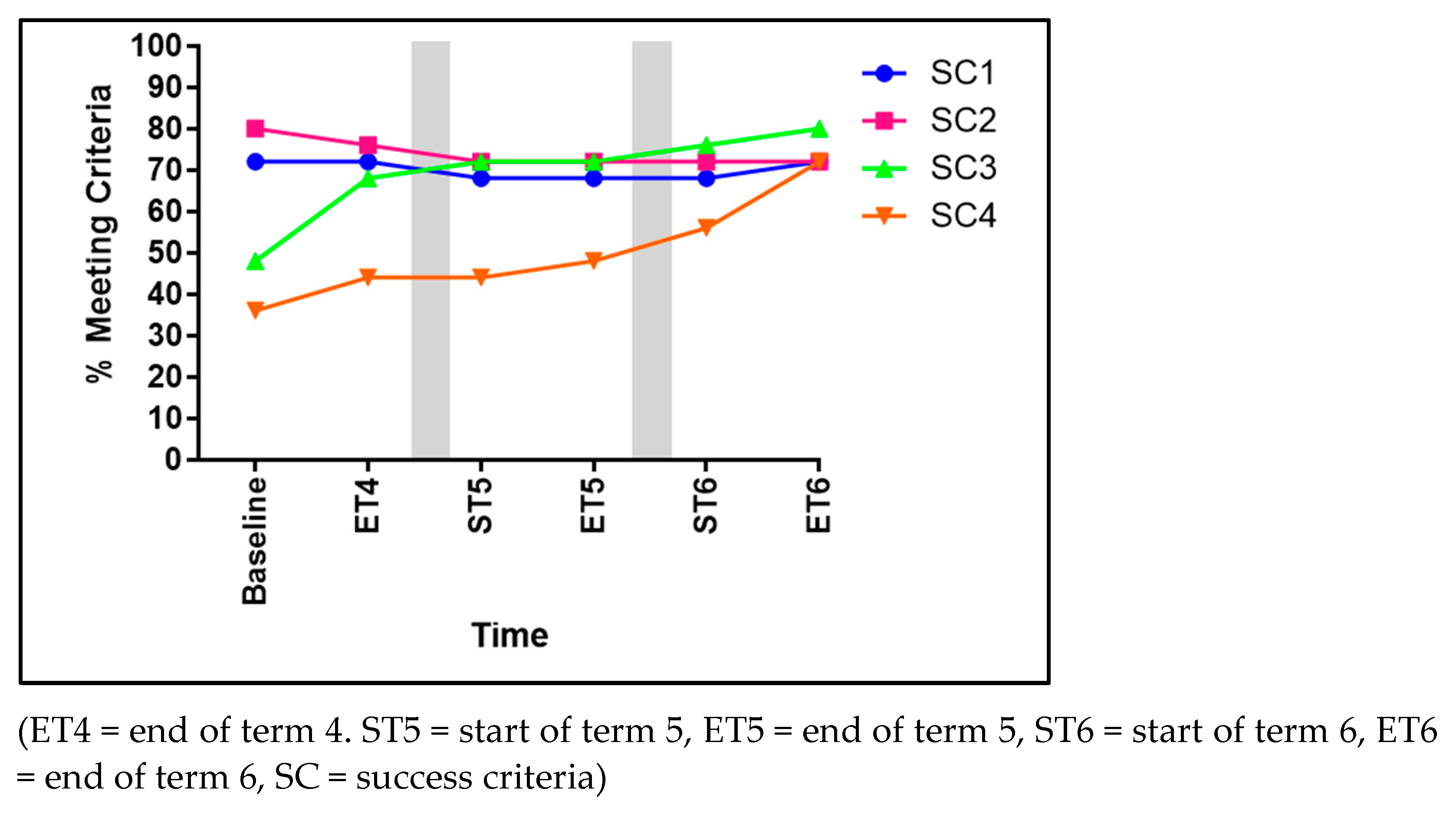
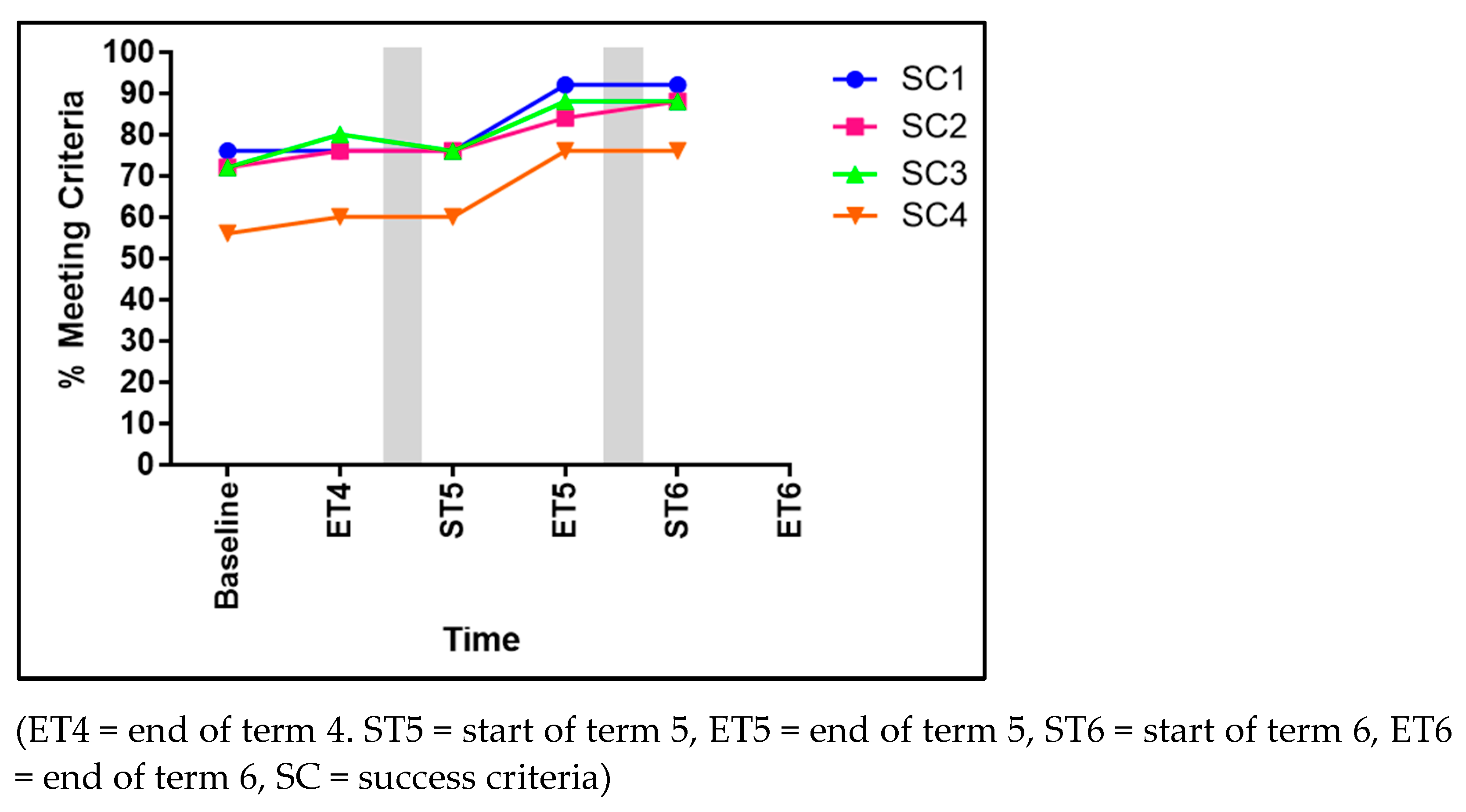
| Skill | SC1 | SC2 | SC3 | SC4 | SC5 |
|---|---|---|---|---|---|
| Hopping | Does the child’s non-support leg swing forward in pendular fashion to produce force? | Does the child’s foot of non-support leg remain behind the body? | Are the child’s arms flexed and swing forward? | Does the child take off and land three consecutive times on preferred foot? | Does the child take off and land three consecutive times on non-preferred foot? |
| Running | Did the child’s arms move in opposition to their legs? | Was there a brief time when both of the child’s feet were off the ground? | Did the child have a narrow foot placement landing on their heel or toe (not flat-footed)? | Was the child’s non-support leg bent at approximately 90 degrees? | |
| Kicking | Did the child have a rapid continuous approach to the ball? | Did the child use an elongated stride or leap immediately prior to ball contact? | Did the child place their non-kicking foot even with or slightly behind the ball? | Did the child kick the ball with instep of preferred foot (shoelaces) or toe? | |
| Climbing | Does the child climb rhythmically? | Does the child observe only the direction of climbing? | Does the child use over grip and closed grip? | Does the child use diagonal reciprocal movement activation pattern? | |
| The use of scissors | Does the child hold scissors in their dominant hand with the correct fingers? | Does the child open and close the scissors when cutting as opposed to tearing the paper? | Can the child cut in a straight line? | Can the child rotate the paper whilst cutting? |
| Motor Competency Interventions Found within the Scheme of Work |
|---|
| Baking cookies. The children will prepare the ingredients and roll and flatten dough with their hands, as well as mix, stir, squeeze, and spread the mixture. Finally, they will bake their cookies. |
| Building an obstacle course using different terrains, such as boxes, hills, and beams. Children will have the chance to build their own obstacle course. Once the obstacle course is constructed, children will revisit it. They will reflect upon their previous circuits, and the children will uplevel and improve their circuits and develop games around them. Each time, they will become increasingly skilful in negotiating the different spaces, pieces of equipment, and the length of the course. Differentiation will be provided by the change in pace and difficulty of each section of the course. |
| Adventurous climbing and swinging—outdoor climbing and swing frames. Children will partake in adventurous climbing on outdoor play equipment and trees within the school grounds. |
| Adventurous climbing and swinging—indoor climbing and swing frames. Children will utilise the indoor climbing apparatus, learning to climb a range of different mediums effectively using accurate foot and hand placement. |
| Use of scissors. Children will spend an entire lesson on the skill of cutting and how to use and move their hands. |
| Moving house. Children will wrap up items and place them in boxes—ready to move houses! The children will be required to physically pick up and move the boxes and ‘furniture’. Using clipboards, the children will make lists, checking that all possessions have arrived safely at their new house! |
| Homemade playdough. The children will prepare the ingredients and roll and flatten playdough with their hands, as well as mix, stir, squeeze, and spread the mixture. Afterwards, the children will mould their playdough into shapes. |
| Weaving. Children will be interlacing two sets of threads or yarns, using right angles to develop a ‘snake’. Afterwards, children will weave strips of paper together to create their own patterns. |
| Gardening—weeding areas around the school and potting plants. Children will participate in weeding the flower beds around the school grounds and then will plant plants. |
| Warm-Up Activities |
|---|
| ‘Traffic Lights’—The children respond to orders like ‘red light’ and ‘green light’, which improves their spatial placement and control by forcing them to consider and analyse their location and stop or respond accordingly. Their ability to estimate distances and modify their pace to halt on schedule improves their timing, coordination, and spatial judgement. |
| ‘Stuck in the Mud’—By navigating the space, children improve their understanding of and ability to navigate around their spatial surroundings. To avoid being caught, they must quickly change directions, which requires agility, positional awareness, and the ability to continuously observe the locations and movements of others. Later during terms 5 and 6, the children played ‘Stuck in the Mud’ with a twist. Once stuck, they held the crab position, and one of their team members had to roll a ball (striding forward, using the correct technique) underneath them to ‘unstick’ them. The incorporation of ‘the bridge’ into this game aimed to improve the children’s balance and core stability. |
| ‘Simon says’—In this classic game, I gave commands such as “Simon says touch your toes” or “Simon says jump forward,” requiring the children to follow the instructions while being mindful of their position in space and the movements of others. |
| ‘Mirror movements’—In pairs, the children face each other and take turns mirroring each other’s movements. This game promotes spatial awareness as the children are required to synchronise their movements whilst being aware of their own and their partner’s position. |
| ‘Animal crawls’—This game encourages the children to mimic different animal movements, such as bear crawls, frog hops, or inchworms. These movements engage the core muscles while also promoting coordination and agility. |
Disclaimer/Publisher’s Note: The statements, opinions and data contained in all publications are solely those of the individual author(s) and contributor(s) and not of MDPI and/or the editor(s). MDPI and/or the editor(s) disclaim responsibility for any injury to people or property resulting from any ideas, methods, instructions or products referred to in the content. |
© 2024 by the authors. Licensee MDPI, Basel, Switzerland. This article is an open access article distributed under the terms and conditions of the Creative Commons Attribution (CC BY) license (https://creativecommons.org/licenses/by/4.0/).
Share and Cite
Huggett, E.; Howells, K. Supporting Young Children’s Physical Development through Tailored Motor Competency Interventions within a School Setting. Children 2024, 11, 1122. https://doi.org/10.3390/children11091122
Huggett E, Howells K. Supporting Young Children’s Physical Development through Tailored Motor Competency Interventions within a School Setting. Children. 2024; 11(9):1122. https://doi.org/10.3390/children11091122
Chicago/Turabian StyleHuggett, Ellie, and Kristy Howells. 2024. "Supporting Young Children’s Physical Development through Tailored Motor Competency Interventions within a School Setting" Children 11, no. 9: 1122. https://doi.org/10.3390/children11091122
APA StyleHuggett, E., & Howells, K. (2024). Supporting Young Children’s Physical Development through Tailored Motor Competency Interventions within a School Setting. Children, 11(9), 1122. https://doi.org/10.3390/children11091122






